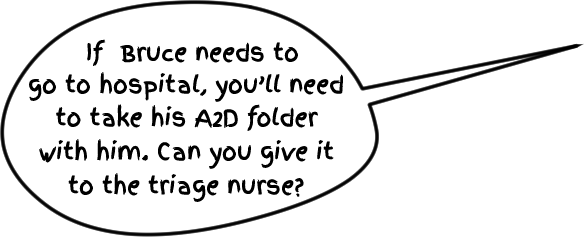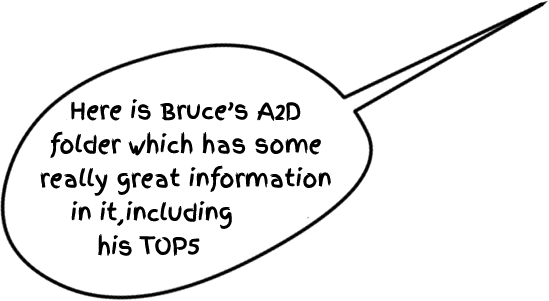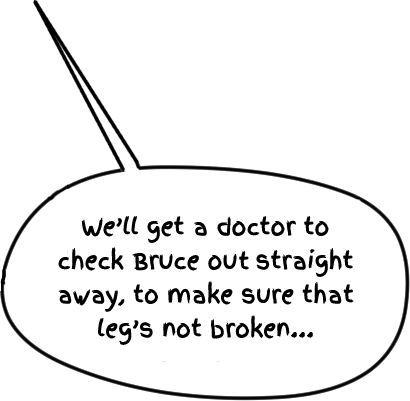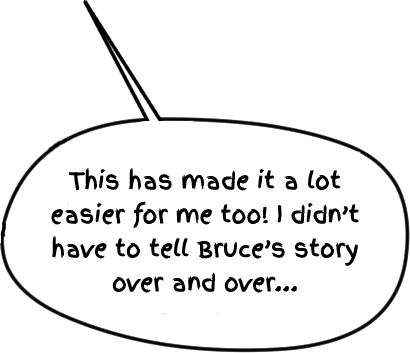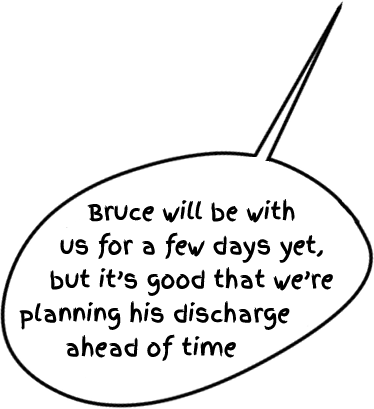Click here to see the A2D Together Folder in action
Watch how the use of the A2D Together Folder helped Bruce receive the best possible care after a fall at home. Health services staff from first responders, hospital admission right through to discharge, all use the folder to deliver better care and a better health outcome for Bruce.
Find out how the A2D folder can help improve your health experience

“When we go anywhere for our health, it goes with us!”
Developed in partnership by Family and Community Services (Disability) and SESLHD
Bruce has had a fall…
Bruce has taken a tumble and the paramedics have been called.
Watch this video to see the A2D Together Folder in action.
- The A2D Together Folder helps transfer Bruce’s information from home to the paramedics and then onto the hospital staff.
- Bruce’s TOP 5 includes information about how he communicates, and helps the hospital staff look after Bruce and provide person centred care.
- The A2D Together Folder provides nursing and medical staff with important information about current medications and treatments.
- Bruce’s TOP 5 highlights his special diet needs to reduce his risk of choking.
- The A2D Together Folder helps hospital staff speak to Bruce’s Disability Support Staff and plan ahead for his discharge.
- The A2D Together Folder returns home with Bruce, is updated if required and then is ready to accompany Bruce if he goes to hospital again.
“For people with intellectual disability and those who support them, the hospital journey is often complex and stressful. The A2D website is a high quality resource with significant capacity to improve this journey for people with intellectual disability. It contains extensive information for the person, carers, health professionals and disability workers which will assist in the collation of a practical resource folder. This resource is a catalyst for substantial practical changes in the way in which the person, their carers, health and disability professionals interact and exchange information. These practical changes are further supported by a rich collation of training materials which promote improved healthcare for people with intellectual disability. The A2D team are to be congratulated for this ground breaking work.
This resource should be routinely used as a fundamental aid to hospitalisations of people with intellectual disability in Australia.”
Professor Julian Trollor – Chair, Intellectual Disability Mental Health
What makes up the A2D Together Folder?
Below are elements from the four parts of the A2D Together Folder. Click through the slides to read about what information is in each section of the folder. Click on the “find out more” buttons for more information about each one.
A user’s perspective
Listen to Anne Funke, NSW Carer of the Year 2014, talk about how the A2D Together Folder has made life with her son Mitchell (who has Angelman Syndrome) a lot easier when visiting hospital.
“I feel more relaxed knowing that if I am not by Mitchell’s side, nursing staff and doctors will understand his specific needs.”
“All his information is in one central spot.”
“Having the A2D Together Folder means that the journey for us, for him and for the staff is a lot smoother.”
“When people not used to speaking out, are heard by people not used to listening, then real change is made”
John O’Brien – Pioneer and advocate of person-centred planning
What training resources are available
for the A2D Together Folder and its use?
Clinical Staff Training
One hour Power Point presentation (with facilitators notes) available to NSW Health Professionals and Disability Support Services who may wish to run education sessions for clinical staff
Topics covered:
- The challenges a person with a cognitive disability may experience when they go to hospital
- The rights of a person with disability to access the same standard of care as all Australians
- Purpose and benefits of the A2D Together Folder.
- What patient-centred care means and how personal values and attitudes may impact on the support provided.
Note: It is recommended that the education session provided be co-facilitated by a representative from both the Health and Disability Sectors.
Training Resources for Disability Support Staff
The “Going to Hospital” training package is available to any NSW Disability Service provider wishing to train disability support staff in implementing the A2D Together Folder and to enhance the skills and knowledge of the Disability Support Staff. This training is designed to be facilitated in a 2-3 hour session.
Topics covered:
- NSW Ombudsman report into preventing deaths of people with disability in care
- Purpose of the A2D Together folder and how to develop
- Roles and responsibility of disability support staff when a person is admitted to hospital




